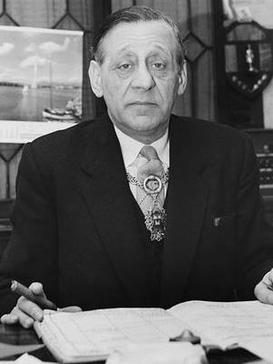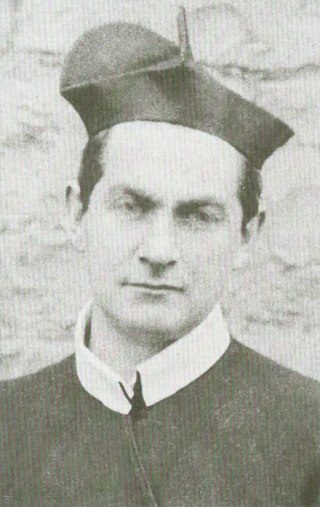
A pogrom is a violent riot incited with the aim of massacring or expelling an ethnic or religious group. The term entered the English language from Russian to describe 19th- and 20th-century attacks on Jews in the Russian Empire. Similar attacks against Jews which also occurred at other times and places became known retrospectively as pogroms. Sometimes the word is used to describe publicly sanctioned purgative attacks against non-Jewish groups. The characteristics of a pogrom vary widely, depending on the specific incident, at times leading to, or culminating in, massacres.

Arthur Joseph Griffith was an Irish writer, newspaper editor and politician who founded the political party Sinn Féin. He led the Irish delegation at the negotiations that produced the 1921 Anglo-Irish Treaty, and served as the president of Dáil Éireann from January 1922 until his death later in August.

The history of Limerick stretches back to its establishment by Vikings as a walled city on King's Island in 812, and to the granting of Limerick's city charter in 1197.

The Kishinev pogrom or Kishinev massacre was an anti-Jewish riot that took place in Kishinev, then the capital of the Bessarabia Governorate in the Russian Empire, on 19–21 April [O.S. 6–8 April] 1903. During the pogrom, which began on Easter Day, 49 Jews were killed, 92 were gravely injured, a number of Jewish women were raped, over 500 were lightly injured and 1,500 homes were damaged. American Jews began large-scale organized financial help, and assisted in emigration. The incident focused worldwide attention on the persecution of Jews within the Russian empire and led Theodor Herzl to propose the Uganda Scheme as a temporary refuge for the Jews.

The history of the Jews in Ireland extends for more than a millennium. The Jewish community in Ireland has always been small in numbers in modern history, not exceeding 5,500 since at least 1891.

Michael Davitt was an Irish republican activist for a variety of causes, especially Home Rule and land reform. Following an eviction when he was four years old, Davitt's family migrated to England. He began his career as an organiser of the Irish Republican Brotherhood, which resisted British rule in Ireland with violence. Convicted of treason felony for arms trafficking in 1870, he served seven years in prison. Upon his release, Davitt pioneered the New Departure strategy of cooperation between the physical-force and constitutional wings of Irish nationalism on the issue of land reform. With Charles Stewart Parnell, he co-founded the Irish National Land League in 1879, in which capacity he enjoyed the peak of his influence before being jailed again in 1881.

The Redemptorists officially named the Congregation of the Most Holy Redeemer, abbreviated CSsR, is a Catholic clerical religious congregation of pontifical right for men. It was founded by Alphonsus Liguori at Scala, Italy, for the purpose of labouring among the neglected country people around Naples. It is dedicated to missionary work and they minister in more than 100 countries. Members of the congregation are Catholic priests and consecrated religious brothers.

The Irish Jewish Museum is a small museum located in the once highly Jewish populated area of Portobello, around the South Circular Road, Dublin 8, dedicated to the history of the Irish Jewish community.

Gerald Yael Goldberg was an Irish lawyer and politician who in 1977 became the first Jewish Lord Mayor of Cork. Goldberg was the son of Lithuanian Jewish refugees; his father was put ashore in Cork with other Jews and told that "Cork was the gateway to America."

John Joseph O'Kelly was an Irish republican politician, author and publisher who served as President of Sinn Féin from 1926 to 1931, Minister for Education from 1921 to 1922, Minister for Irish from 1920 to 1921 and Leas-Cheann Comhairle of Dáil Éireann from 1919 to 1921. He served as a Teachta Dála from 1918 to 1921 and 1922 to 1923.

Robert Emmet Briscoe was an Irish Fianna Fáil politician who served as a Teachta Dála (TD) in the Oireachtas from 1927 to 1965.

Sir Otto Moses Jaffe, JP, also spelt Jaffé, was a German-born British businessman, who was twice elected Lord Mayor of Belfast and was a leader of the Jewish community in the city.

A series of pogroms against Jews in the city of Odessa, Ukraine, then part of the Russian Empire, took place during the 19th and early 20th centuries. They occurred in 1821, 1859, 1871, 1881 and 1905.
Nicholas Hugh Sebag-Montefiore is a British writer. He trained as a barrister before becoming a journalist and then a non-fiction writer. His second book Dunkirk: Fight to the Last Man was published in 2006. His previous book is Enigma: The Battle for the Code, the story of breaking the German Enigma machine code at Bletchley Park during the Second World War. His family owned Bletchley Park until they sold it to the British government in 1938.
Dermot Keogh was an Irish historian. He was Professor of History and Emeritus Jean Monnet Professor of European Integration Studies at University College Cork. Keogh died on 6 September 2023, at the age of 78.
The anti-Jewish violence in Central and Eastern Europe following the retreat of Nazi German occupational forces and the arrival of the Soviet Red Army – during the latter stages of World War II – was linked in part to postwar anarchy and economic chaos exacerbated by the Stalinist policies imposed across the territories of expanded Soviet republics and new satellite countries. The anti-semitic attacks had become frequent in Soviet towns ravaged by war; at the marketplaces, in depleted stores, in schools, and even at state enterprises. Protest letters were sent to Moscow from numerous Russian, Ukrainian and Belarusian towns by the Jewish Anti-Fascist Committee involved in documenting the Holocaust.

Helen Lewis MBE was a pioneer of modern dance in Northern Ireland, and made her name as a dance teacher and choreographer. A survivor of the Holocaust, she was also known for her memoir of her experiences during the Second World War.

John Creagh, CsSr was an Irish Redemptorist priest. Creagh is best known for, firstly, delivering antisemitic speeches in 1904 responsible for inciting riots against the small Jewish community in Limerick, as well as, secondly, his work as a Catholic missionary in the Kimberley region of Western Australia between 1916 and 1922.
Anti-Jewish boycotts are organized boycotts directed against Jewish people to exclude them economical, political or cultural life. Antisemitic boycotts are often regarded as a manifestation of popular antisemitism.















